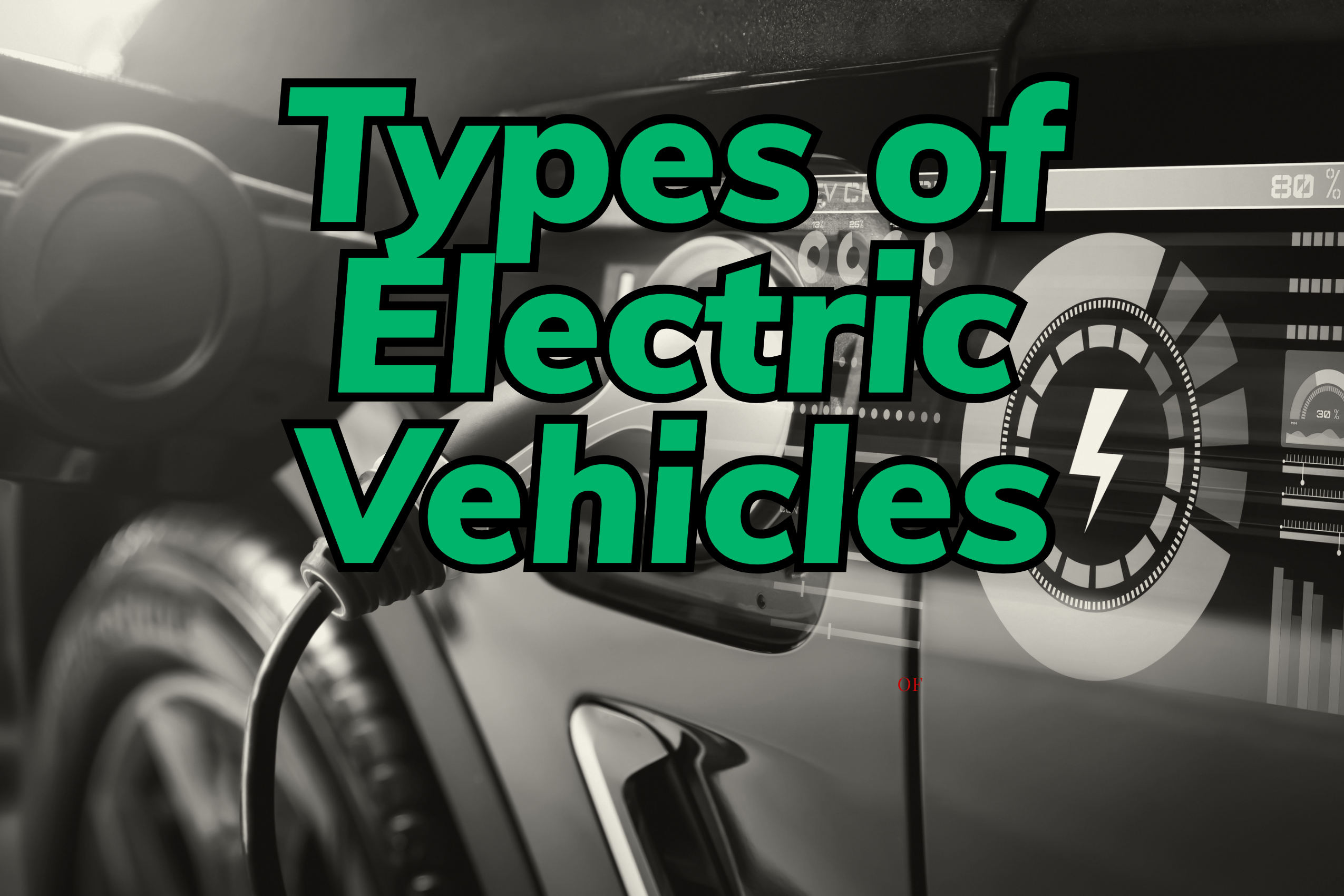Electric vehicles (EVs) have become a significant player in the automotive industry, offering a cleaner, more sustainable alternative to traditional internal combustion engine (ICE) vehicles. As the technology evolves and consumer interest grows, it’s essential to understand the different types of electric vehicles available. This article explores the three main categories of EVs: Battery Electric Vehicles (BEVs), Plug-in Hybrid Electric Vehicles (PHEVs), and Hybrid Electric Vehicles (HEVs).
1. Battery Electric Vehicles (BEVs)
What Are BEVs?

Battery Electric Vehicles (BEVs), also known as all-electric vehicles, rely entirely on electricity for power. They have no internal combustion engine and instead use electric motors and battery packs to propel the vehicle. BEVs must be plugged into an external electricity source to recharge their batteries.
Key Features of BEVs
- Zero Emissions: BEVs produce no tailpipe emissions, making them an environmentally friendly option.
- High Efficiency: Electric motors are more efficient than internal combustion engines, offering better energy conversion.
- Quiet Operation: BEVs are known for their quiet and smooth operation due to the absence of an ICE.
- Instant Torque: Electric motors provide instant torque, resulting in quick acceleration and responsive performance.
Popular BEVs
- Tesla Model 3: Known for its impressive range, cutting-edge technology, and performance.
- Nissan Leaf: One of the best-selling electric cars worldwide, offering a balance of range and affordability.
- Chevrolet Bolt EV: Praised for its range and practicality in the compact car segment.
2. Plug-in Hybrid Electric Vehicles (PHEVs)
What Are PHEVs?
Plug-in Hybrid Electric Vehicles (PHEVs) combine an internal combustion engine with an electric motor and a rechargeable battery. Unlike traditional hybrids, PHEVs can be plugged into an external power source to recharge their batteries, allowing for a limited all-electric driving range.
Key Features of PHEVs
- Dual Power Sources: PHEVs use both gasoline and electricity, providing flexibility and extending driving range.
- Reduced Emissions: PHEVs produce fewer emissions compared to conventional ICE vehicles, especially during electric-only driving.
- Versatility: The ability to switch between electric and gasoline power makes PHEVs suitable for various driving conditions.
- Regenerative Braking: PHEVs capture and store energy during braking, improving efficiency.
Popular PHEVs
- Toyota Prius Prime: A well-known hybrid with plug-in capability, offering a balance of efficiency and practicality.
- Chevrolet Volt: Known for its extended electric range and smooth transition between electric and gasoline power.
- BMW i3 REx: Combines electric driving with a range extender for longer trips.
3. Hybrid Electric Vehicles (HEVs)
What Are HEVs?
Hybrid Electric Vehicles (HEVs) use both an internal combustion engine and an electric motor, but unlike PHEVs, they cannot be plugged in to recharge. Instead, HEVs rely on regenerative braking and the ICE to charge the battery. The electric motor assists the ICE to improve fuel efficiency and reduce emissions.
Key Features of HEVs
- Improved Fuel Efficiency: HEVs offer better fuel economy compared to traditional ICE vehicles by using electric assistance.
- Lower Emissions: The electric motor reduces the load on the ICE, resulting in lower emissions.
- Automatic Energy Management: HEVs automatically switch between electric and gasoline power based on driving conditions.
- Regenerative Braking: Like PHEVs, HEVs capture and reuse energy from braking.
Popular HEVs
- Toyota Prius: One of the most iconic hybrids, known for its reliability and fuel efficiency.
- Honda Accord Hybrid: Offers a seamless hybrid experience with the practicality of a midsize sedan.
- Ford Fusion Hybrid: A well-rounded hybrid with a comfortable ride and advanced technology features.
Conclusion
Understanding the different types of electric vehicles—BEVs, PHEVs, and HEVs—can help consumers make informed decisions based on their driving needs and environmental impact preferences. BEVs offer a pure electric experience with zero emissions, PHEVs provide the flexibility of electric and gasoline power, and HEVs deliver improved fuel efficiency without the need for external charging. As the EV market continues to grow, these vehicles represent the future of sustainable transportation.


Hey people!!!!!
Good mood and good luck to everyone!!!!!
Hey people!!!!!
Good mood and good luck to everyone!!!!!
Hey people!!!!!
Good mood and good luck to everyone!!!!!
Hey people!!!!!
Good mood and good luck to everyone!!!!!
Hello!
Good cheer to all on this beautiful day!!!!!
Good luck 🙂